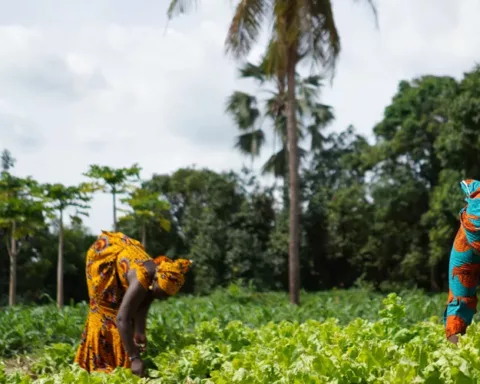- New assessments show US$90 million immediate funding required to meet urgent need in up to 20 low- and middle-income countries (LMICs). Unitaid and Wellcome will make an immediate contribution of up to US$20 million in total for the emergency response.
- COVID-19 Oxygen Emergency Taskforce brings together key organisations working on oxygen access under ACT-Accelerator Therapeutics pillar, as COVID-19 surges and preventable deaths occur
- Taskforce partners will work together to measure oxygen demand, work with financing partners, and secure oxygen supplies and technical support for worst-affected countries
Since the start of the pandemic, affordable and sustainable access to oxygen has been a growing challenge in low- and middle-income countries.
COVID-19 has put huge pressure on health systems, with hospitals in many LMICs running out of oxygen, resulting in preventable deaths and families of hospitalised patients paying a premium for scarce oxygen supplies.
Oxygen is an essential medicine, and despite being vital for the effective treatment of hospitalised COVID-19 patients, access in LMICs is limited due to cost, infrastructure and logistical barriers. Health facilities often cannot access the oxygen they require, resulting in the unnecessary loss of lives.
Recognising the central importance of sustainable oxygen supply – alongside therapeutic products such as dexamethasone – for the treatment of COVID-19, the Access to COVID Tools Accelerator Therapeutics pillar (co-led by Unitaid and Wellcome), is taking a new role to coordinate and advocate for increased supply of oxygen, and, in partnership with a WHO-led consortium, is today announcing the launch of a COVID-19 Oxygen Emergency Taskforce.
It is estimated that more than half a million people in LMICs currently need 1.1 million cylinders of oxygen per day, with 25 countries currently reporting surges in demand, the majority in Africa. This supply was constrained prior to COVID-19 and has been exacerbated by the pandemic.
Dr Philippe Duneton, Executive Director of Unitaid, said: “This is a global emergency that needs a truly global response, both from international organisations and donors. Many of the countries seeing this demand struggled before the pandemic to meet their daily oxygen needs. Now it’s more vital than ever that we come together to build on the work that has already been done, with a firm commitment to helping the worst-affected countries as quickly as possible.”
The taskforce has determined an immediate funding need of US$90 million to address key challenges in oxygen access and delivery in up to 20 countries, including Malawi, Nigeria and Afghanistan. This first set of countries has been identified based on assessments coordinated by WHO’s Health Emergencies Programme, in order to match in-country need with potential financing, such as through the World Bank and the Global Fund. Unitaid and Wellcome will make an immediate contribution of up to US$20 million in total for the emergency response. The urgent, short-term requirements of additional countries will be measured and costed in the coming weeks, with the overall funding need over the next 12 months estimated by ACT-A to be US$1.6 billion – a figure that will be regularly reviewed by the taskforce.
Dr Mike Ryan, Executive Director of the WHO Health Emergencies Programme, said: “Oxygen is life-saving and it is imperative to move faster to scale-up holistically with patient-centred, end-to-end solutions that improve clinical outcomes. WHO has been working through the Biomedical Consortium to bring the technical, clinical and procurement partners together with about US$80 million of biomedical equipment procured for low and middle-income countries. The Oxygen Taskforce will help drive oxygen scale-up through further innovation, financing and capacitation.”
Paul Schreier, Chief Operating Officer at Wellcome, said: “We have made critical advances in providing lifesaving clinical care and treatments to COVID-19 patients over the last year. The impact of the combination of oxygen and dexamethasone to treat severely ill patients has, in particular, been incredible. But global access to advances remains unequal. We need to urgently increase access to medical oxygen to ensure patients are benefiting regardless of where they live and ability to pay. International solidarity is the quickest – and only – way out of this pandemic. It is a public health, scientific, economic and moral imperative that all tools are made available globally.”
The taskforce brings together key organisations[4] that have been working to improve access to oxygen since the start of the pandemic including Unitaid, Wellcome, WHO, Unicef, the Global Fund, World Bank, the Clinton Health Access Initiative (CHAI), PATH, the Every Breath Counts coalition and Save the Children. Building on these efforts, partners will focus on four key objectives as a part of an emergency response plan: measuring acute and longer-term oxygen needs in LMICs; connecting countries to financing partners for their assessed oxygen requirements; and supporting the procurement and supply of oxygen, along with related products and services. Other areas in the scope of the taskforce include addressing the need for innovative market-shaping interventions, as well as reinforcing advocacy efforts to highlight the importance of oxygen access in the COVID-19 response.
Henrietta Fore, Executive Director of UNICEF, said: “Oxygen is a simple medical intervention that remains in short supply for far too many around the world. The COVID-19 pandemic has taken this acute shortage and made it a full-blown emergency. But addressing the oxygen gap will not only help with COVID-19 treatment in countries that are losing far too many saveable lives. It will also help to improve health systems and health outcomes beyond COVID-19 in the long term, including for the many newborns and children who require oxygen to survive.”






